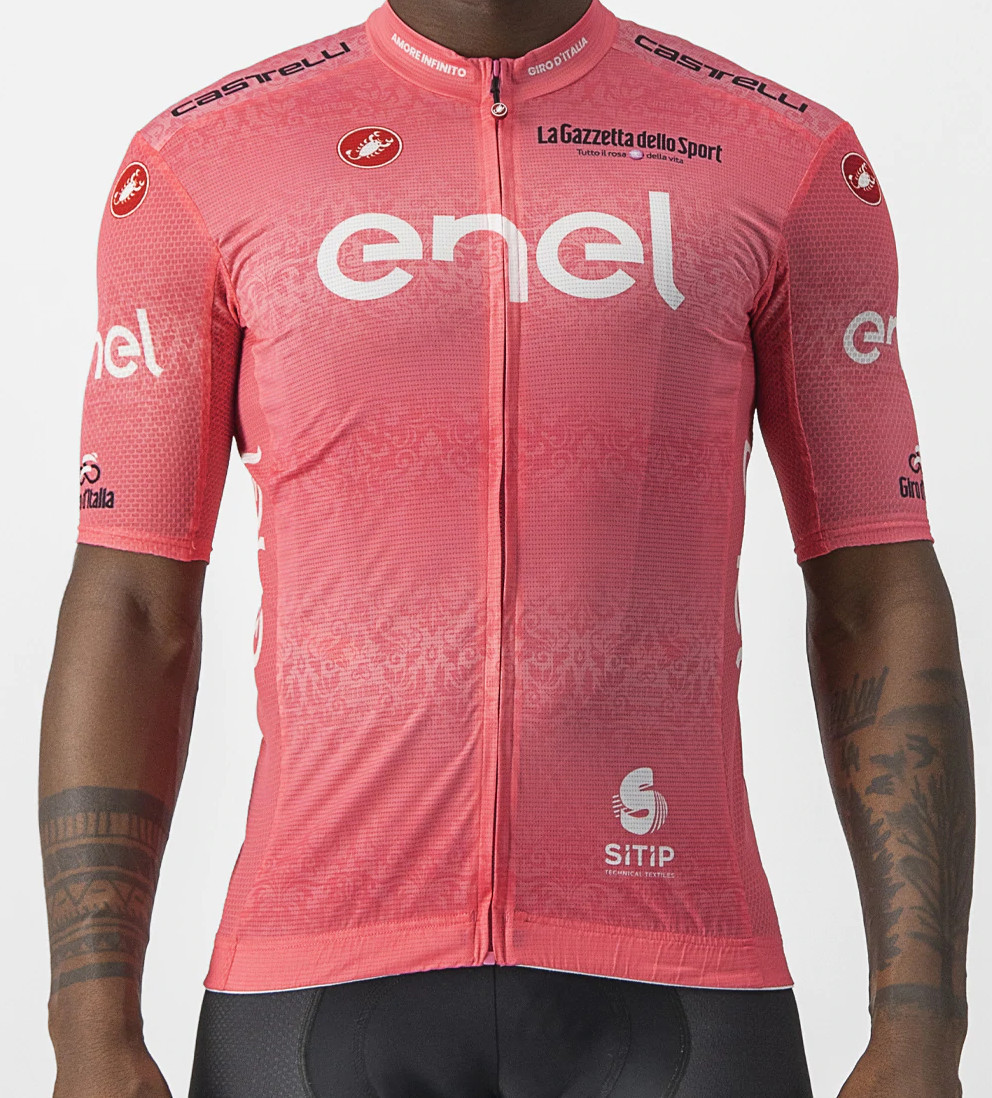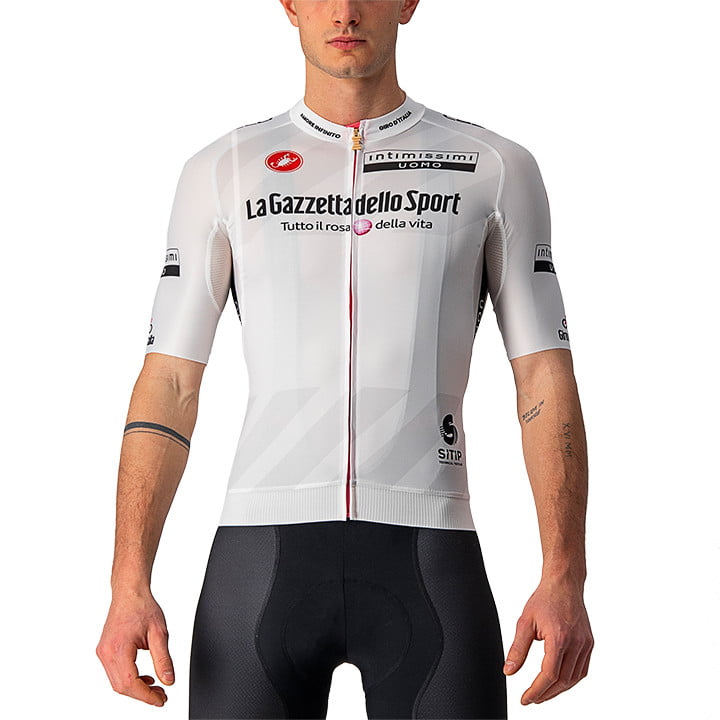The Significance of Giro d’Italia Jersey Colours
The Giro d’Italia, one of the most esteemed cycling races globally, is renowned for its iconic jersey colours. These jerseys represent the different classifications in the race, each with its unique meaning and significance. The four Giro d’Italia jersey colours are the Maglia Rosa (Pink Jersey), Maglia Ciclamino (Cyclamen Jersey), Maglia Azzurra (Blue Jersey), and Maglia Bianca (White Jersey).
Breaking Down the Four Giro d’Italia Jersey Colours
The Giro d’Italia features four distinctive jersey colours, each representing a different classification in the race. These jerseys have a rich history and unique design, making them easily recognizable in the world of cycling. Here, we will discuss each jersey in detail, including its history, design, and criteria for winning.
Maglia Rosa (Pink Jersey): The General Classification Leader
The Maglia Rosa, or Pink Jersey, is the most famous and prestigious jersey in the Giro d’Italia. It represents the leader of the general classification, calculated by adding each rider’s finishing times for each stage. The rider with the lowest total time wears the pink jersey. La Gazzetta dello Sport, the race’s organizer, introduced the pink jersey in 1931, and its colour represents the newspaper’s pages.
Maglia Ciclamino (Cyclamen Jersey): The Points Classification Leader
The Maglia Ciclamino, or Cyclamen Jersey, is awarded to the rider with the most points in sprints and intermediate sprints. Points are also awarded for finishing in the top positions in each stage. The jersey was introduced in 1967 and was initially called the Maglia Rossa (Red Jersey). It was renamed the Maglia Ciclamino in 2005, representing the cyclamen flower’s colour.
Maglia Azzurra (Blue Jersey): The King of the Mountains
The Maglia Azzurra, or Blue Jersey, is given to the rider with the most points in mountain climbs. Points are awarded based on the difficulty and position of the climb. The jersey was introduced in 1933 and was initially called the Maglia Verde (Green Jersey). It was renamed the Maglia Azzurra in 1952, representing the colour of the Italian Alpine Club’s flag.
Maglia Bianca (White Jersey): The Young Rider Classification Leader
The Maglia Bianca, or White Jersey, is awarded to the best young rider under 25 years old in the general classification. The rider with the lowest total time in the general classification wears the white jersey. The jersey was introduced in 1976 and is often worn by riders who are considered the future stars of cycling.
Maglia Rosa (Pink Jersey): The General Classification Leader
The Maglia Rosa, or Pink Jersey, is the most iconic and prestigious jersey in the Giro d’Italia. It represents the leader of the general classification, which is calculated by adding each rider’s finishing times for every stage. The rider with the lowest total time wears the pink jersey. La Gazzetta dello Sport, the race’s organizer, introduced the pink jersey in 1931, and its colour represents the newspaper’s pages. The Maglia Rosa has been worn by some of the greatest cyclists in history, such as Fausto Coppi, Eddy Merckx, and Miguel Indurain.
Maglia Ciclamino (Cyclamen Jersey): The Points Classification Leader
The Maglia Ciclamino, or Cyclamen Jersey, is awarded to the rider with the most points in sprints and intermediate sprints during the Giro d’Italia. Points are also given for stage finishes, with more points available for flat stages than mountain stages. The first rider to cross the finish line in each stage receives 25 points, while the second and third riders receive 20 and 16 points, respectively. Points are also awarded to the top five riders in intermediate sprints, with 10, 6, 3, 2, and 1 points available. The rider with the most points at the end of the race wears the Maglia Ciclamino.
Maglia Azzurra (Blue Jersey): The King of the Mountains
The Maglia Azzurra, or Blue Jersey, is given to the rider with the most points in mountain climbs during the Giro d’Italia. Points are awarded based on the difficulty of the climb and the rider’s position when they reach the top. The harder the climb, the more points are available. For example, a Category 1 climb awards 40 points to the first rider to reach the top, while a Category 4 climb awards only 3 points. The rider with the most points at the end of the race wears the Maglia Azzurra.
Maglia Bianca (White Jersey): The Young Rider Classification Leader
The Maglia Bianca, or White Jersey, is awarded to the best young rider under 25 years old in the general classification. The general classification is calculated by adding each rider’s finishing times for every stage, and the rider with the lowest total time is the leader. The Maglia Bianca is worn by the best young rider in the general classification, and if there is a tie, the rider with the lowest place in the overall standings wins the jersey. The Maglia Bianca was first introduced in the Giro d’Italia in 1976 and has been worn by many famous riders, including Miguel Indurain, Marco Pantani, and Nairo Quintana.
How to Win Each Giro d’Italia Jersey Colour
Winning a Giro d’Italia jersey colour is a significant achievement for any cyclist. Here are some tips and strategies for winning each jersey:
Maglia Rosa (Pink Jersey): The General Classification Leader
To win the Maglia Rosa, cyclists must focus on consistent performances throughout the race. This includes pacing themselves during mountain stages, taking advantage of time trials, and staying with the lead group during flat stages. A strong team is also essential for providing support during the race and helping with tactics.
Maglia Ciclamino (Cyclamen Jersey): The Points Classification Leader
To win the Maglia Ciclamino, cyclists must prioritize sprinting and intermediate sprints. This requires a strong finishing kick and the ability to position themselves well in the final stages of the race. A good understanding of sprint tactics and the ability to read the race are also important.
Maglia Azzurra (Blue Jersey): The King of the Mountains
To win the Maglia Azzurra, cyclists must focus on accumulating points during mountain stages. This requires a strong climbing ability and the ability to break away from the pack during mountain stages. A good understanding of mountain tactics and the ability to read the race are also important.
Maglia Bianca (White Jersey): The Young Rider Classification Leader
To win the Maglia Bianca, young cyclists must focus on consistent performances throughout the race, similar to the Maglia Rosa. However, they must also prioritize staying with the lead group during flat stages and taking advantage of opportunities to break away during mountain stages.






